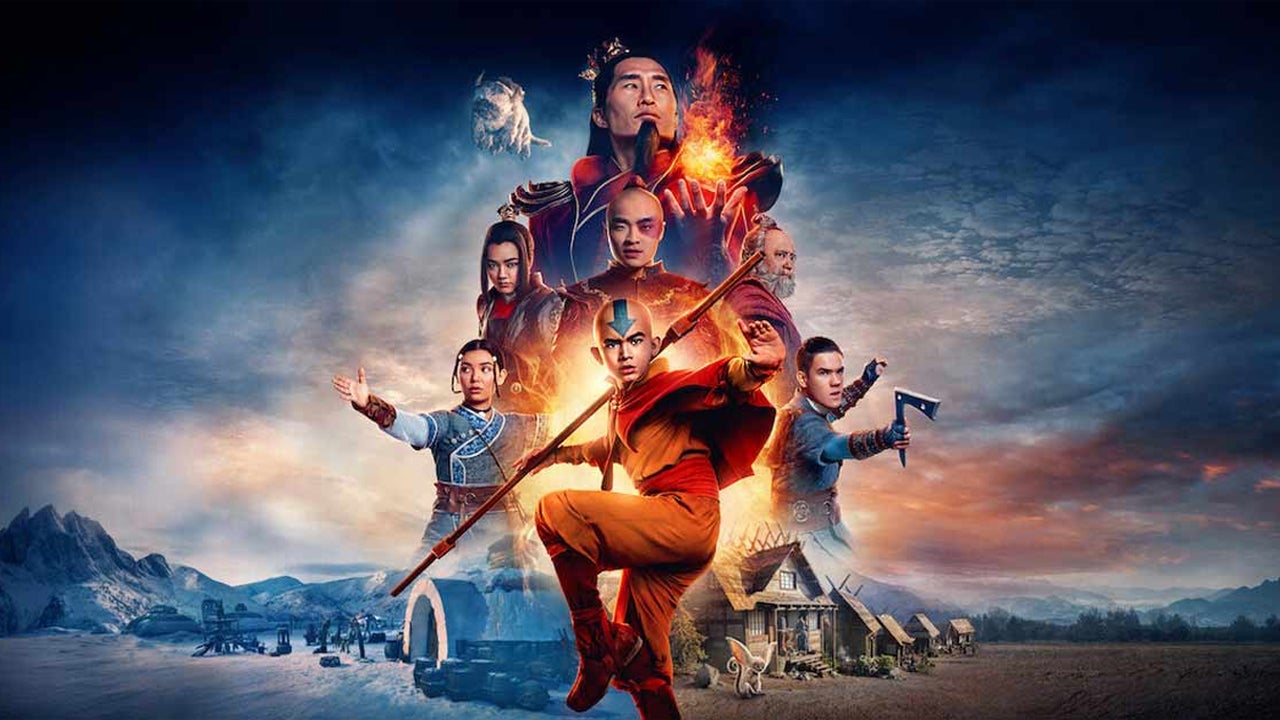Don’t think of Netflix’s latest animation-to-live-action series as a straight adaptation of Avatar: The Last Airbender, but rather as a dramatic reimagining of the beloved Nickelodeon cartoon. This show works not by rehashing every shot, but thanks to an intimate focus on showcasing its cast of compelling characters. Already powerful emotional moments gain new depth thanks to a willingness to depict what’s only alluded to in the original series. Granted, this interpretation has its fair share of flaws, but it’s a far cry from M. Night Shyamalan’s disastrous 2010 spin on young hero Aang’s mission to master air, fire, water, and earth and defeat the villainous Fire Lord. The amount of unconvincing special effects, clunky moments of exposition, and its rush to cover so much story in just eight episodes is not insignificant, but even their powers combined don’t outweigh everything this Last Airbender gets right. Above all else, it has its heart in the right place – and for Team Avatar, that’s what matters most.
The story centers on Aang, who after accidentally being frozen in time for a century, awakens to find his people have been wiped out and the Fire Nation is waging war on the world. How Aang became the last Airbender, and the way that trauma shapes his future, is always in focus in the new series, no matter how wild and magical the story gets. It’s a captivating premise that puts the weight of the world on Aang’s shoulders, and forces him to challenge the very idea of what being the Avatar means, wisely putting less emphasis on how he's the one person in the world who can control all four elements and focusing squarely on his role as a peacemaker, a savior, and a miracle worker who keeps the world’s four nations existing in harmony. That’s a lot to demand from an adolescent, but Aang leads with kindness and does his best.
It’s one thing to hear about the genocidal Fire Nation wiping a whole society off the map. But to see it dramatized, Order 66-style, not only shows how the world of Avatar: The Last Airbender fell into such a hopeless state but helps us understand exactly what, and who, Aang has lost. It’s all part of a world that is lovingly brought to life, from its grand cities down to its quirky hybrid animals. However, in making the transition to live-action, much of the silliness and whimsy of the original are traded for a tone that’s more grounded, more mature, and more violent – but it’s not done just for edginess’ sake. The slightly darker vibe works in service of the story because it makes Aang’s unwavering compassion and anti-war philosophy shine all the brighter.
Aang, Katara, and Sokka (played respectively by Gordon Cormier, Kiawentiio, and Ian Ousley) make for a solid group of young actors who faithfully capture the spirit of Avatar’s core trio. Cormier looks and acts like the Blue Fairy turned a 2D sketch of Aang into a real boy; it’s impressive for a 12-year-old actor to be the lead of such a major story, and he does it well by evoking the joy and playfulness of his character while also thoughtfully dealing with an immense amount of responsibility no one of any age should have to bear. Sokka is by far the funniest character, which goes a long way to lighten the mood and voicing the thoughts of the audience when weird stuff happens, as it often does in this world where martial artists manipulate fire, water, earth, or air. His sister, Katara, is more hit-and-miss, at times delivering moving words as the beating heart of the team and at others falling a bit flat. Still, watching these three characters form bonds of friendship and learn to work together as a team makes for some of the show’s most enjoyable moments.
As the Avatar, Aang learns to command the elements with tremendous force, but it’s his kind heart that gives him his strength, and it’s to Cormier’s credit that he makes Aang impossible not to root for. It’s of special note how well the choreography captures Aang’s unique way of moving: He excitedly bounces around and casually flutters up into the sky on a whim, like you’d expect from someone who grew up with this power. He has a fun and cool combat style where he likes to spin and flip on a breeze to counter his opponent, and use his surroundings to his advantage – sort of like a pint-sized Jackie Chan who can fly. It’s worth noting, though, that while all of the environments and settings look stunning, it’s not always convincing when the characters move around in them.
The characters who gain the most from this adaptation’s changes are the Fire Nation’s Prince Zuko and his uncle, General Iroh, who are on a mission to hunt down the Avatar. Dallas Liu plays Zuko with just enough entitlement and rage to mask the pain underneath, while Paul Sun-Hyung Lee is absolutely sublime as the wise, humorous, yet no less scarred Iroh. Their bond as pseudo-father/son outcasts runs deep, and a series of flashbacks show the fiery tragedies that forged it. Anyone familiar with the source material knows Zuko and Iroh have a great storyline ahead of them, so it’s impressive that this retelling manages to add new layers that make it even more nuanced and poignant.
Spending more time with the Fire Nation characters means we see a surprising amount of the Big Bad Evil Guy, Fire Lord Ozai. It’s a risky decision: Seeing so little of Ozai until the end of the original series is part of what makes the character work so well – kind of like if Jaws could shoot fireballs out of his mouth. But it all works to excellent effect here, and not just because original series veteran Daniel Dae Kim delivers a steely, intimidating performance and at one point takes his shirt off. Ozai is just as ruthless in his war to conquer the world as he is in toughening up his son Zuko and daughter Azula, even if it means playing them against each other to cause an unfathomable amount of pain and daddy issues. Elizabeth Yu crushes it as Azula, with an introduction so cruel and sadistic it’s actually kind of impressive – and she only grows more unhinged from there. All that made me glad her introduction wasn’t saved for the second season.
It’s clear from the get-go that this show will have bending – lots and lots of bending. For the most part, it looks incredible. Forget how it took six Earthbenders to throw a single, slow-moving rock in Shyamalan’s movie; accented by distinct martial arts styles, Netflix’s Earthbenders raise up pillars from the ground and strike with thunderous impact. Firebending is explosive and dazzling, like watching Liu Kang pop off. Airbending channels tornadoes and gales that blast enemies away. Unfortunately, Waterbending isn’t quite as well done, given the liquid often looks plasticky and feels more like a playful splash than a torrential strike when it hits an opponent. Aside from that wet blanket, the bending is on point, making every fight scene exciting and consistent in packing a wondrous surprise.
Aang’s quest to master all four elements and face Ozai is a long one, spanning three seasons in the original series. But while the first of those seasons told its story over 20 23-minute episodes, the live-action show does it in eight. Significant cuts are made in favor of focusing squarely on Team Avatar’s main quest to reach and defend the Northern Water Tribe from invading Fire Nation forces, and the results are mixed. About half the episodes feel like they’re hustling to get through more plot than they have time for. On one hand, there’s some admirable condensing in the writing, stitching together thematically complementary elements from multiple episodes of the cartoon while also squeezing in some delightful fan service.
But it comes at the expense of breathing room for all those characters and events. The result is erratic pacing, conversations that take sharp turns out of nowhere, and a general sense of unwieldiness. On the flip side, when the show takes its time, we’re treated to some truly amazing stuff. Avatar features a cast of brilliantly crafted characters, each with their own personal mission and philosophy on life, and the show is at its best when it slows down enough to explore them.
There’s plenty to enjoy with this adaptation. The first time we see Zuko’s black metal warship, it’s given the same type of immense scale and daunting musical cue as Star Wars gives a Star Destroyer. Everything from the costuming and makeup to props and weapons are made with excellent attention to detail. And all the little surprises make it fun to watch whether you know the material or not, such as an intense moment between Iroh and a nameless Earthbender soldier that shows what it’s like being on two sides of a pointless war.
But there are also many quibbles to be had, like how we’re often reminded that the Avatar needs to keep a low profile, and yet when the heroes travel to a big city, they immediately take off their disguises and walk around in bright, primary-colored clothing that practically screams their true identities. As a fan of the original show, I couldn’t help but notice that Aang’s ability to commune with past Avatars gets a new wrinkle that changes how the supercharged Avatar State works. This allows for a truly awesome display of power early on that emphasizes what makes this power unique, but the change seems only designed for that singular moment and for the rest of the show the characters have to keep coming up with excuses for why that awesome thing can’t be done whenever trouble arises. Animal pals Appa and Momo are present, and Momo in particular looks adorably lifelike, but they don’t appear enough to feel like they’re actual characters rather than loyal pets – which means, unfortunately, Appa serves as just a fuzzy, flying taxi.
And, if there’s one aspect of this world that feels undercooked, it’s the spiritual side. A bit of time is devoted to how the Spirit World works and the Avatar’s connection to it, but it’s not enough to prepare us for how important it becomes later on, so there’s a haze of confusion when all the glowy things start happening.






